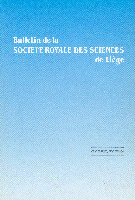Study of Blue Metal-poor Stars Using UVIT/AstroSat
Anju Panthi,
Department of Physics, Birla Institue of Technology and Science, Pilani, Rajasthan-333031, India. Corresponding author: p20190413@pilani.bits-pilani.ac.in
Annapurni Subramaniam,
Indian Institute of Astrophysics, Sarjapur Road, Koramangala, Bangalore- 560034, India
Kaushar Vaidya,
Department of Physics, Birla Institue of Technology and Science, Pilani, Rajasthan-333031, India
Vikrant Jadhav,
Helmholtz-Institut fur Strahlen-und Kernphysik, Universitat Bonn, Nussallee 14-16, D-53115 Bonn, Germany
Sharmila Rani,
Indian Institute of Astrophysics, Sarjapur Road, Koramangala, Bangalore- 560034, India
Thirupathi Sivarani,
Indian Institute of Astrophysics, Sarjapur Road, Koramangala, Bangalore- 560034, India
Sindhu Pandey,
Aryabhatta Research Institute of Observational Sciences, Manora Peak, Nainital- 236002, India
Snehalata Sahu,
Department of Physics, University of Warwick, Coventry CV4 7AL, United Kingdom
Abstract
Blue metal-poor stars are main-sequence stars that are bluer and brighter than typical turn-off stars in metal-poor globular clusters. They are thought to have either evolved through post-mass transfer mechanisms as field blue straggler stars or have accreted from Milky Way dwarf satellite galaxies. It has been found that a considerable fraction of blue metal poor stars are binaries, possibly with a compact companion. We observed 27 blue metal poor stars using UV imaging telescope of AstroSat in two far-UV filters, F148W and F169M. In this work, we explain the possible formation channels of two stars, BMP17 and BMP37. We fit BMP17 to a single-component spectral energy distribution whereas BMP37 with a binary-component spectral energy distribution. As both of them are known SB1s, we suggest that the WD companion of BMP17 may have cooled down so that it is out of UV imaging telescope detection limit. On the other hand, we discover a normal mass white dwarf as the hot companion of BMP37, indicating mass transfer as the possible formation channel.
Keywords : Galactic fields, Stars, Exotic stars, Blue metal-poor stars, White dwarfs
Pour citer cet article
Anju Panthi, Annapurni Subramaniam, Kaushar Vaidya, Vikrant Jadhav, Sharmila Rani, Thirupathi Sivarani, Sindhu Pandey & Snehalata Sahu, «Study of Blue Metal-poor Stars Using UVIT/AstroSat», Bulletin de la Société Royale des Sciences de Liège [En ligne], Volume 93 - Année 2024, No 2 - Proceeedings of the 3rd BINA Workshop on the Scientific Potential of the Indo-Belgian Cooperation, 215-226 URL : https://popups.uliege.be/0037-9565/index.php?id=11647.

